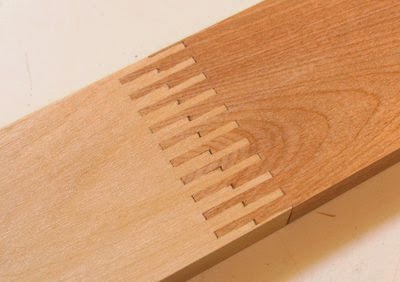Tongue and Groove: A strong joint, the tongue and groove joint is widely used for re-entrant angles.Tongue and groove is a method of fitting similar objects together, edge to edge, used mainly with wood, in flooring, parquetry, panelling, and similar constructions. Tongue and groove joints allow two flat pieces to be joined strongly together to make a single flat surface. Before plywood became common, tongue and groove boards were also used for sheathing buildings and to construct concrete formwork.
Each piece has a slot (the groove) cut all along one edge, and a thin, deep ridge (the tongue) on the opposite edge. The tongue projects a little less than the depth of the groove. Two or more pieces thus fit together closely. The joint is not normally glued, as shrinkage would then pull the tongue off.
Plywood may also be tongued all round to fit it flush into a framed structure, and plywood for sub-floors used in platform framing is often supplied with tongue and groove edges.
When joining thicker materials, several tongue and groove joints may be used one above the other.
Tools: Miter saw, Rip saw, jigsaw.
Alternate names include box-pin joint or box joint. The finger joint is the most common joint used to form long pieces of lumber from solid boards; the result is finger-jointed lumber. The finger joint can also be invaluable when fixing tables and chairs and also can be used in such things as floor boards, timber roof and door construction. This is also used in design technology for students. Finger joints can be hard to make without the right tools.
Tools: Router and Table Saw


